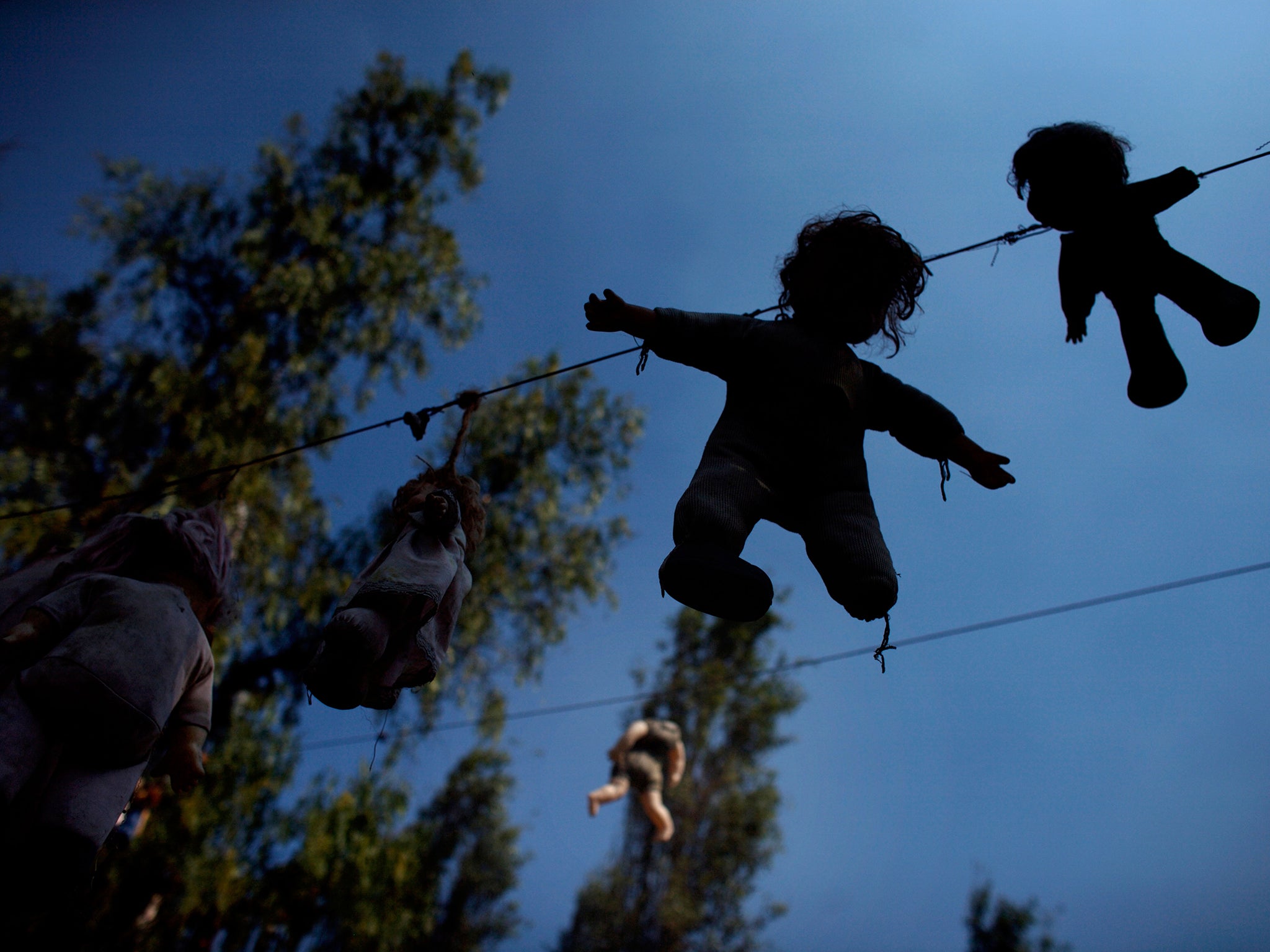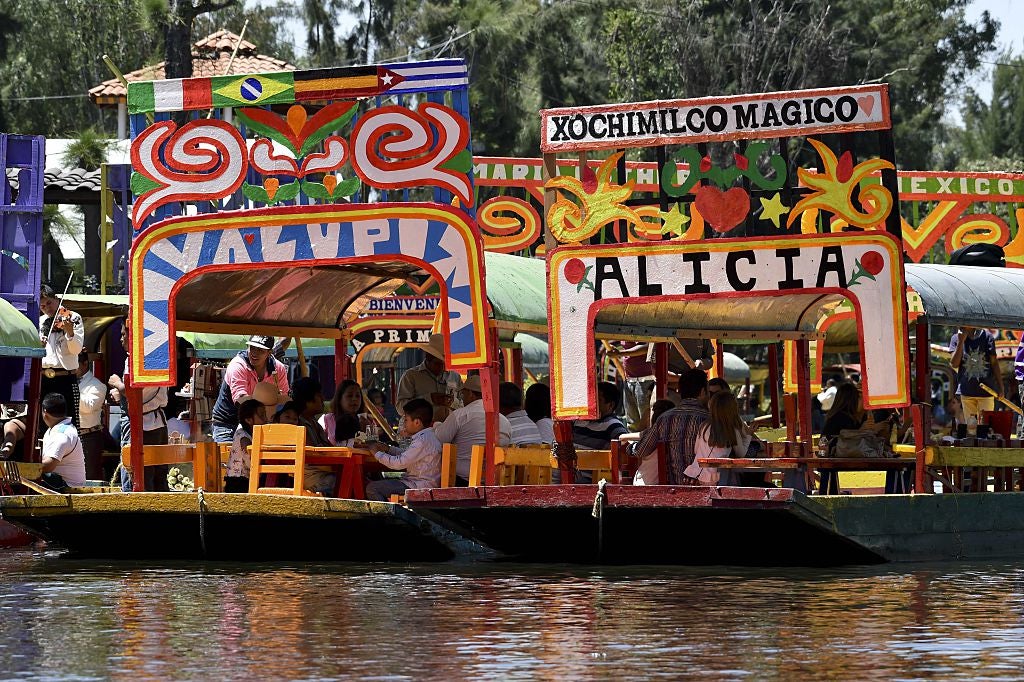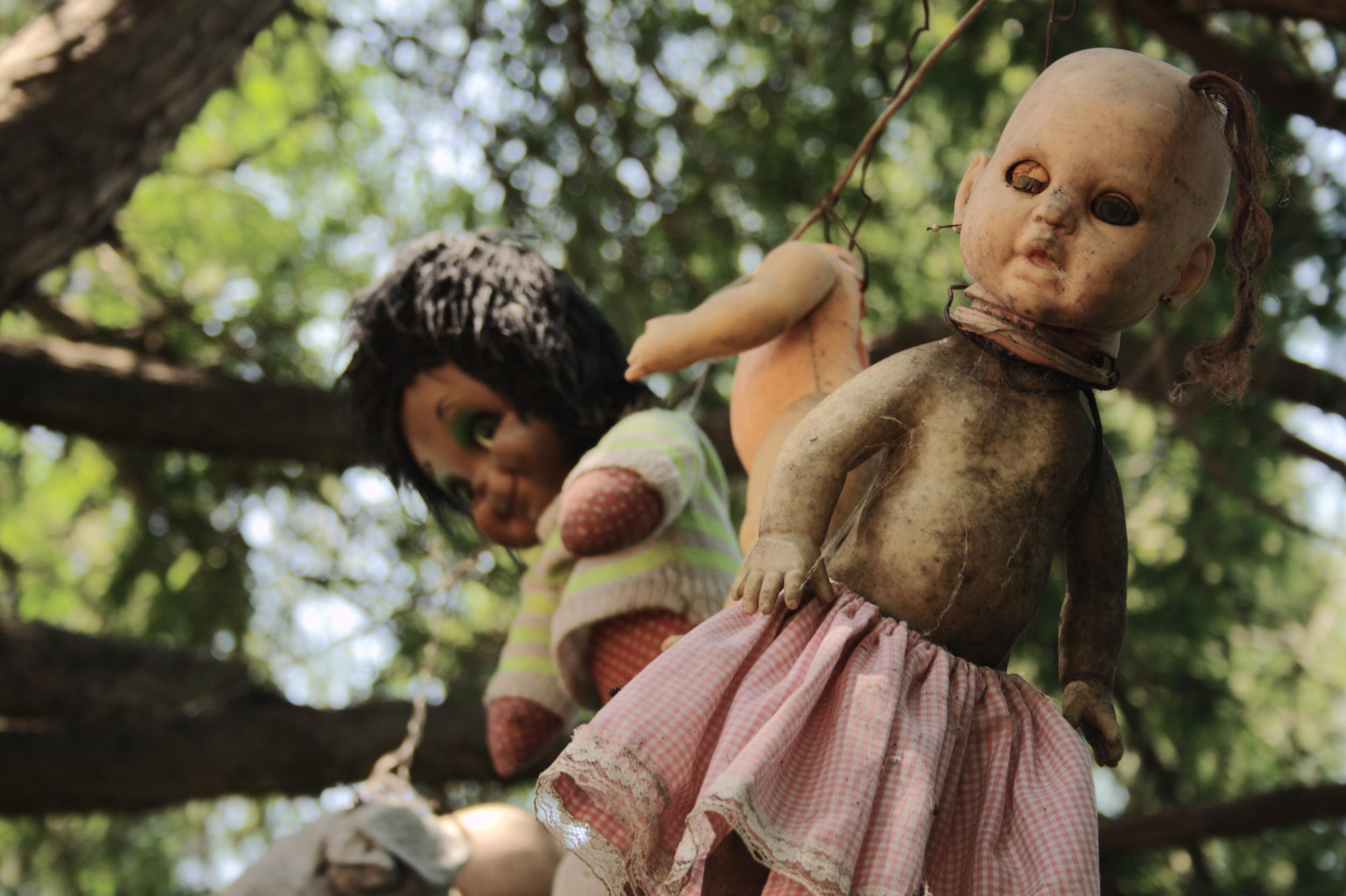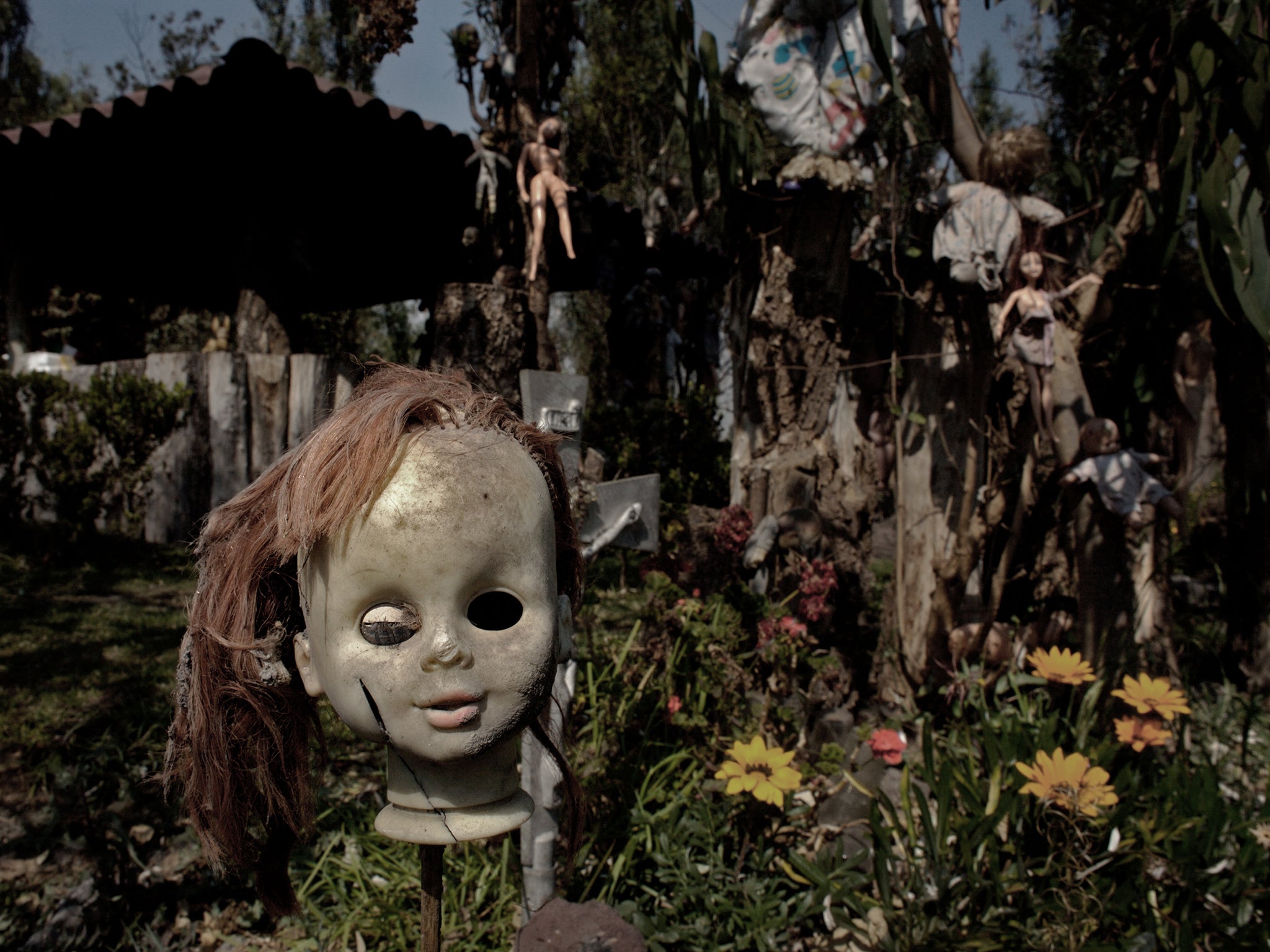The Independent's journalism is supported by our readers. When you purchase through links on our site, we may earn commission.
Island of the Dolls: A trip down Mexico City’s Aztec canals
Mexico City’s ancient waterways fed the Aztecs; now they’re helping to rebuild the city after the earthquake with special spooky tours. Susannah Rigg takes a ride

Your support helps us to tell the story
From reproductive rights to climate change to Big Tech, The Independent is on the ground when the story is developing. Whether it's investigating the financials of Elon Musk's pro-Trump PAC or producing our latest documentary, 'The A Word', which shines a light on the American women fighting for reproductive rights, we know how important it is to parse out the facts from the messaging.
At such a critical moment in US history, we need reporters on the ground. Your donation allows us to keep sending journalists to speak to both sides of the story.
The Independent is trusted by Americans across the entire political spectrum. And unlike many other quality news outlets, we choose not to lock Americans out of our reporting and analysis with paywalls. We believe quality journalism should be available to everyone, paid for by those who can afford it.
Your support makes all the difference.The sky darkened from a bright blue to a deep blue-black as the sun set on a horizon that couldn’t be seen from the canals of Xochimilco, the manmade waterways that snake around the south of Mexico City. As the waters dimmed and a sunset mist appeared above the surface, the atmosphere seemed to change from fun – at the weekend, the brightly painted ‘trajinera’ boats are packed with revellers listening to mariachis and sipping on spicy micheladas – to something more mystical, full of whispered secrets.
“There are ghosts around these waters, you know,” Tino told me, as if reading my mind. “Ghosts and dead people and nahuales,” he continued – people who have taken on animal form, often to perform magic or inflict harm.
“I have seen black jaguar-like forms pass under my boat, jump onto the banks and disappear into the trees,” Tino said, describing how a nahual interacts with the human world.

In five decades as a ‘trajinero’, steering boats through these canals built by his distant ancestors, he had seen many otherworldly things, he said.
For believers in all things occult, it wouldn’t be surprising that a waterway as old as Xochimilco – man-made in Mesoamerican times – could be home to spirits. The Mexica (more commonly known as Aztec) grew almost a third of the food needed to feed the city of Tenochtitlan – upon which modern-day Mexico City now stands – on these ingeniously designed banks of fertile soil called chinampas.
Nowadays, flowers are grown here and at this time of year, the banks set back from the water are full of the cempasúchil (marigold) flowers associated with Day of the Dead. These pungent, bright orange flowers spice the air with their immediately recognisable sharp scent. So recognisable that they are placed on altars to help guide the dead home during the first days of November.
Ghost stories abound on these waters, now known as the ‘Floating Gardens of Mexico City’ and around Day of the Dead, the tales are told to visitors who are brave enough to traverse the canals by candlelight. Tales of La Llorona – a woman who can be heard searching and crying out for her children in the night – and other stories of eerie sightings that have no clear explanation, are shared as the boat is guided through the pitch-black canals. This year, part of the money for this 250 peso (£10) tour on 31 October will go to help relief efforts in San Gregorio, a nearby neighbourhood affected by the earthquake that struck central Mexico on 19 September.
What’s more, the first 20 people to take this night-time tour will get a visit to Xochimilco’s most notorious location: the Island of the Dolls.

“Of course, there is La Isla de las Muñecas,” Tino continued, goosebumps immediately rising on my arms. La Isla de las Muñecas – Island of the Dolls – is an area on the bank on the canals where dolls swing eerily from the trees.
Myths abound about the island. Legends say that a young girl drowned there; the man who found her later finding a doll floating where the girl had been. Out of respect, he strung the doll up to a tree, but despite his act of reverence, he felt haunted by the spirit of the girl, and began to hang more and more dolls to please her.
There are hundreds of dolls there today, many of which have severed limbs or are decapitated or mutilated in some way. The effect of these lifeless figures swaying in the breeze is understandably macabre, and unsettling stories are plentiful.

“One day I took three girls to the island,” said Tino, explaining that two of the girls wanted to go, but the other, who claimed to be psychic, was reluctant. Encouraged by her friends, she gave in and they headed to the island. Tino moored the boat and the girls jumped off to check out the dolls.
“About five minutes later, the girls came running back. The one girl who had not wanted to come to the island was crying. Between her sobs, she screamed that the doll was laughing,” Tino told me, as I searched the dark banks for any signs of movement.
“So, I said I would go up to the island,” continued Tino. “I was going to check it out, to make them feel better, tell them they were wrong. But when I got onto the island, I could hear the sound of laughter too. There was a doll, dressed as a rabbit and it was laughing, I promise you. I couldn’t believe what I was seeing.” He stared at me directly, leaving me in no doubt about his story.
Let’s just hope that the ghosts are as altruistic as the passengers this year.

Travel essentials
Getting there
British Airways flies to Mexico City from £577.
Staying there
Casa Jacinta Guest House in the Coyoacán district has doubles from £75, room only.
More information
Tours leave from the Belem Pier in Xochimilco on 31 October at 8pm and cost 250 pesos (£10). For more information, phone 0052 (55) 5676 0810.
Other candlelit tours, that do not include the donation to earthquake relief, run nightly from 27 October to November 3 from Cuamenco Pier. Tickets can be purchased here.
Join our commenting forum
Join thought-provoking conversations, follow other Independent readers and see their replies
Comments